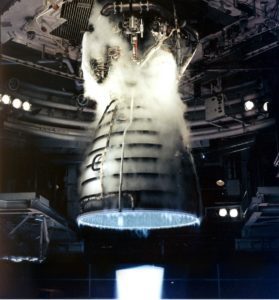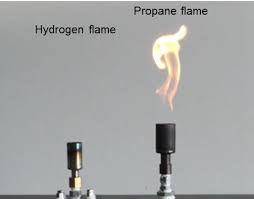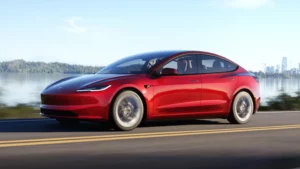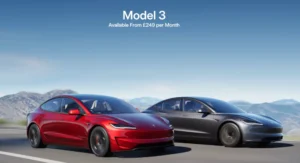There has been a growing push from many sides saying that Hydrogen is the answer to all our energy problems.
But it is not. And here’s why.
A few weeks ago JCB, the big yellow digger firm was beating the Hydrogen drum as the founder’s son Jo said.
“I truly believe hydrogen is the UK’s best opportunity to build a world-leading industry which creates UK jobs, cuts emissions and is the envy of the globe.”
Jo is just one of many pitching the benefits of Hydrogen. He says “Nothing but steam is emitted from the tailpipe. Zero CO2 at point of use.” Note at point of use.

Note the clarification of Zero Co2 at the point of use. This is critical to understanding the bigger picture of energy politics.
Let’s look at the benefits and issues of using Hydrogen as fuel and remember that efficiency in the total power supply train, not just at the motor is critical.
Hydrogen has two big issues to overcome, and both are significant hurdles.
The first is that pure hydrogen doesn’t exist – it’s both everywhere and nowhere. It is the most abundant element on Earth and yet does not exist on its own.
Hydrogen is the most abundant chemical substance in the universe, constituting roughly 75% of all normal matter. Stars such as the Sun are mainly composed of hydrogen in the plasma state. Most of the hydrogen on Earth exists in molecular forms such as water and organic compounds.
As a gas hydrogen or H2. is colorless, odorless, tasteless non-toxic, and highly combustible.
We can’t just dig Hydrogen up from the ground we must create hydrogen from either Water or from organic compounds, and this requires a lot of energy. In water or H2O, the Hydrogen and Oxygen molecules are very, very reluctant to let go of each other. To prise then apart requires significant energy.
2 H2O(l) → 2 H2(g) + O2(g)
This is fine when the output of the process is something very valuable to us, such as fertiliser. But less so when the output of the process must compete with much cheaper commodities, as it must in an energy market.
Current Hydrogen production comes in three flavours with nice simple colour explanations that relate to the amount of greenhouse gas (GHG) emissions generated in the production of Hydrogen.
Grey hydrogen: generated from natural gas or methane through a process called steam reforming, producing GHG emissions. Most of today’s hydrogen use is grey;
Blue: during the steam reforming process, a high proportion of carbon generated is captured and stored underground. It is classified as low carbon hydrogen;
Green: made by using electricity from renewable sources to split water molecules into hydrogen and oxygen. This is classified as carbon free hydrogen.
Once we have Hydrogen the second issues come into play.
Hydrogen’s intrinsic physical properties create a whole range of unique problems. It’s a tiny light atom that easily escapes confinement.
Keeping it captive for storage is expensive, and moving it around safely even more so, because in liquid form it must be very cold.
For example, to replace gas boilers with hydrogen boilers requires thousands of miles of new, much thicker, high-pressure pipes. Last year, Lord Martin Callanan, the energy minister, candidly described the plans to replace our gas boilers with hydrogen boilers
“as pretty much impossible”.
Hydrogen is however very explosive and burns very well. Pure hydrogen-oxygen flames emit ultraviolet light and with high oxygen mix are nearly invisible to the naked eye, as illustrated by the faint plume of the Space Shuttle Main Engine.

The Space Shuttle Main Engine burnt hydrogen with oxygen, producing a nearly invisible flame at full thrust.
Again, hydrogen powered transport is not impossible, it’s just hampered by reality. Liquified hydrogen may be as light as petrol or kerosene, but keeping it at -257C requires much heavier apparatus.
For example, converting a two-engine turboprop from kerosene to hydrogen, increases the weight of the engine from two tonnes to 13 tonnes. Not ideal on any airplane.
And when hydrogen explodes, it is quite spectacular. Remember the great Hindenburg? On May 6, 1937, the world’s largest hydrogen-floated dirigible airship went up in towering flames in New Jersey. People are still discussing the cause of the fire that killed 36.

The Australian and Japanese are keen on Hydrogen and created a join experiment to generate Hydrogen from Australian Coal and then ship it to Japan for use in cars and industry. The specially commissions vessel to transport the cargo burst into flames on the maiden voyage.
A fire broke out on the world’s first hydrogen carrier vessel in Australia shortly before it set sail to Japan carrying the world’s first international shipment of liquefied hydrogen (LH2) in January, it has emerged.

As for storage, the story is little better. Wind often generates electricity when it is not needed (and doesn’t generate it when it is needed). So when the wind is blowing, the hydrogen lobby argues, we can create “green hydrogen” using electrolysis. These electrolysers are expensive, and sensitive, and switching them on intermittently to produce the mythical green hydrogen isn’t economic.
So green hydrogen is really not one, but two dead whales, engaged in a gruesome act of congress.
In his devastating assessment of the Government’s energy paper, Prof Dieter Helm calls it a “lobbyist’s utopia”. Prof Helm, an energy expert, describes how rent-seekers “[react] to each problem… by inventing another intervention. Each has unintended consequences, and these unintended consequences need more ‘fixes’”. That’s green hydrogen in a nutshell.
Green hydrogen may be generated reliably and cheaply using high-temperature gas-cooled nuclear reactors (HTGRs), a technology the Japanese have been refining for two decades. Japan’s first HTGR opened in 1997, but incredibly, was out of commission for a decade.
The history of nuclear energy is full of such stories, of untapped potential, and of avenues not explored. Our own Government tepidly hopes for a “HTGR demonstration by the early 2030s at the latest.” But even with a fleet of HTGRs generating hydrogen, the nasty stuff still needs to be stored and moved, and those costs haven’t gone away.
Using hydrogen remains the worst way of doing almost anything.
Special interest groups however have discovered that the magic words “net zero” have the same incantatory power as “Open Sesame!”. In Arabian Nights, the phrase opened up a cave full of treasure. Here, they open up an unlimited trove of research grants and subsidies, and tap into abundant buckets of ill-directed “green” capital.
The dead whale is never removed from the beach – and perhaps that’s the point.
Hydrogen is not the answer.
Sources:
Recharge News: https://www.rechargenews.com/energy-transition/world-s-first-international-liquid-hydrogen-shipment-delayed-again-by-up-to-eight-months/2-1-1046004
JCB: https://www.jcb.com/en-gb/news/2022/06/worlds-first-hydrogen-digger-parades-for-the-queen#:~:text=JCB%20is%20at%20the%20forefront,working%20on%20the%20exciting%20development.
NASA: https://www.nasa.gov/content/space-applications-of-hydrogen-and-fuel-cells
National Grid: https://www.nationalgrid.com/stories/energy-explained/hydrogen-colour-spectrum





